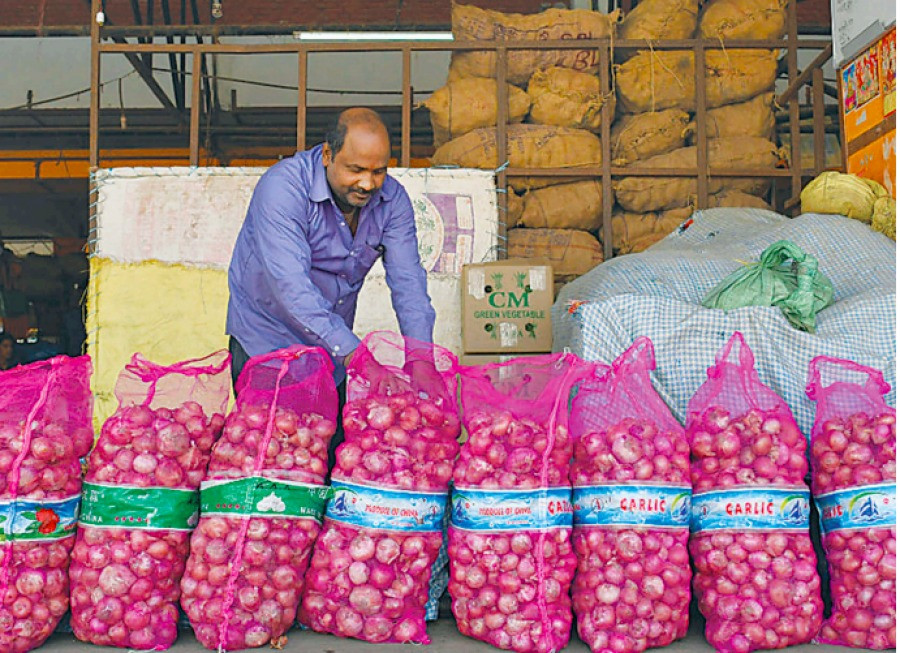Editorial
Go local
The government must create a support system for local farmers rather than continue to import agro products.
Despite a 15.63 percent drop in overall imports owing to pandemic-induced restrictions, Nepal's imports of agricultural products continue to grow, totalling Rs250 billion in the fiscal year 2019-20. With this, the share of agro products reaches 21 percent of the total imports. Cereals top the list at Rs56.88 billion, almost a fifth of the total agriculture import bill. Rice and maize form a bulk of the cereal imports, at Rs22.23 billion and Rs14.75 billion respectively. The products that follow cereals include edible oil, vegetables, fruits and nuts and seeds. Nepal spent Rs14.75 billion on animal fodder. The country continues to spend Rs14.75 billion on animal fodder and millions more on things as rudimentary as flowers.
Although 65 percent of the population depends on agriculture, the farm sector contributes only 27 percent to the gross domestic product. For all its claims about being an agricultural country, Nepal's agro imports have jumped almost six-fold from Rs44.43 billion in the past 10 years. Nobody takes that claim seriously anymore, but for students who have to rote-learn lessons to pass their exams, and political leaders who have to please their voter base. But beyond the facade of the archaic claim lies a dirty picture that reveals decades of systemic failures of successive governments to modernise the country's agricultural sector and make it self-sufficient if not export-oriented. However, the government, rather than focusing its efforts towards minimising imports, it is intent upon collecting duties levied on such imports.
This was evident in the government's continuous import of vegetables from India during the coronavirus-induced nationwide lockdown even as Nepali farmers' produce rotted in the fields for want of market. Ultimately, farmers were compelled to spill their milk or vegetable products onto the streets, as was seen especially in places like Chitwan as the government failed to facilitate their sale owing to the lockdown. If they follow the right approach, local levels are also in a position to minimise the role of third parties and facilitate direct transactions between producers and consumers. Even as it focuses on modernising agricultural production, it is by re-introducing the age-old concepts of haat bazaar that the local agricultural market can be re-energised, and producers and consumers brought together without the mediation of a third party.
The government must, thus, focus on creating local markets for the sale and purchase of agro products. But it likes to talk big on agricultural revolution more than take concrete steps. What we need is a sustainable market to support the needs of farmers and consumers both. It is not that the government does not give grants at all. But they go to the rich and the powerful. So, a strict regulation of the agricultural grants to make them accessible to the needy would help groom new agricultural entrepreneurs.
For long, the Nepali agricultural sector has also suffered from labour shortage and resultant increase in the cost of production owing to outmigration of the working population. But that might change for the good in the post-pandemic scenario as a large number of the youth have returned home or are likely to return in the immediate future. The government can, with the right approach, cash in on the skills learnt by foreign returnees and begin re-energising the agricultural sector. The local levels are in a position to give a new outlook to the agricultural sector if their resources are put to use wisely. Ultimately, what use are the 753 local units if they do not put any effort towards realising the need to re-energise the agricultural sector from the ground level?
Local governments must also implement the policy of discouraging people from leaving their agricultural lands arid so as to increase local production. This helps bring down unemployment at the local level and increase the collection of taxes. It is the local levels that should begin an agricultural revolution from the bottom up. Local levels are best positioned to identify the production capability of the land in local areas. Local levels can take the lead in identifying the agricultural possibilities and capabilities of their areas, and work towards making local markets self-sufficient if not export-oriented.




 8.12°C Kathmandu
8.12°C Kathmandu














